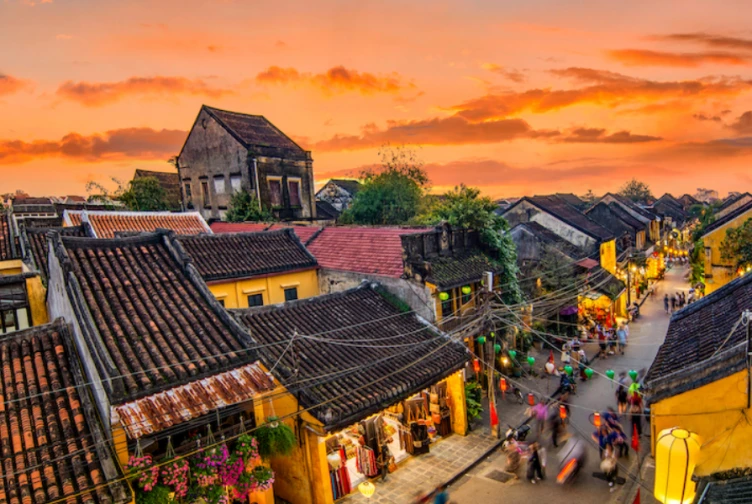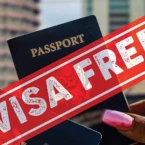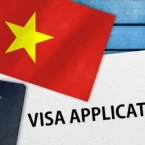_1034x861.jpg)
Discover Vietnamese National Cultural Identity In The Vietnam Museum Of Ethnology
Content []
Table of Contents
I. Introduction general about the Vietnam Museum of Ethnology
1. Location
- Address: Nguyen Van Huyen Street, Cau Giay district, Hanoi City
- Website: http://www.vme.org.vn/en
- Tel: +84 243 756 2193
- Opening Hours: From 08:30 – 17:30 (closed on Mondays and New Year's Day)
Nestled amidst the verdant embrace of Hanoi's Cau Giay District, approximately 8 kilometers from the bustling city center, lies the Vietnam Museum of Ethnology.
Stepping onto its grounds, you'll find yourself transported to a serene haven, where traditional stilt houses representing Vietnam's diverse ethnic groups stand proudly, their silhouettes mirroring the graceful curves of the surrounding park. This captivating oasis, a haven for cultural exploration, awaits your discovery.
2. The museum through the history of Vietnam
Today, the Vietnam Museum of Ethnology continues to evolve, embracing new technologies and adapting its exhibits to stay relevant to contemporary audiences. Born from the seeds of cultural appreciation in 1959, the vietnam museum of ethnology hanoi blossomed into a vibrant reality in 1997.
Its journey began with the desire to showcase the nation's 54 ethnic groups, a vision nurtured through international support and crystallised in the unique stilt-house architecture.

Today, it stands as a cultural treasure trove, its halls brimming with over 15,000 artifacts whispering stories of traditions, textiles, and everyday life. From its inception, the museum has championed research, education, and outreach, becoming a beacon of understanding and celebration of Vietnam's rich tapestry of cultures.
This ever-evolving haven embraces technology, interactive displays, and captivating performances, ensuring its treasures resonate with all generations. In a world where modern strides are made, the museum remains a steadfast steward of the past, reminding us of the enduring beauty and importance of national cultural identity.
3. Ethnic museum hanoi how to get there?
There are many ways to get to the Vietnam Museum of Ethnology in Hanoi, depending on your budget and preferred mode of transportation. Here are a few options:
By taxi: This is the quickest and most convenient option, especially if you're not familiar with the city. Taxis are readily available in Hanoi, and the fare from the city center to the museum should be around 100,000 VND to 150,000 VND (approximately $4-6 USD). Just flag down a taxi on the street or call for one through a ride-hailing app.
By Grab: Grab is a popular ride-hailing app in Southeast Asia, similar to Uber. It's a convenient way to get around Hanoi, and you can usually book a ride within minutes. The fare from the city center to the ethnic museum hanoi should be around 50,000 VND to 70,000 VND (approximately $2-3 USD).
By motorbike: If you're feeling adventurous, you can rent a motorbike and ride to the museum by yourself. This is a great way to see the city at your own pace, but be sure to be extra cautious, as traffic in Hanoi can be quite chaotic. Helmets are mandatory for all riders, and you should also have an international driver's license.
II. What to see in the Vietnam Museum of Ethnology?
1. The Bronze Drum Building
The Bronze Drum Building is one of the two main exhibition buildings of the museum, a place that attracts a large number of domestic and foreign tourists with an area of up to 2,000 square meters with 2 floors, with the design imitates the bronze drum of the famous Dong Son civilization, approved by the Vice President Nguyen Thi Binh and President of the French Republic Jacques Chirac opened in November 1997, on the occasion of the Summit of French-speaking countries in Hanoi.
In the exhibition space of the Bronze Drum building, visitors will admire artifacts and vivid images of the lives of Vietnamese ethnic groups. From ancient Dong Son bronze drums, and colorful national costumes, to unique musical instruments, unique festivals,... All are imbued with the national cultural identity represented by a series of artifacts, films, ethnographic photographs, vivid recreations, and a series of articles written by the Museum's researchers...
All displayed content is presented in 3 languages (Vietnamese, French, and English). The discovery itinerary includes 9 main parts, arranged systematically, consistently, scientifically, and attractively. In addition, in the Bronze Drum building, there is also space to organise temporary exhibitions.
The Bronze Drum Building is one of the attractive tourist destinations in this museum, attracting a large number of domestic and foreign tourists to visit and learn about the culture of Vietnamese ethnic groups.
If you are a culture and history lover, don't miss the opportunity to explore The Bronze Drum Building.
2. The Kite Building
The Kite Building in the Vietnam Museum of Ethnology has an area of more than 5,000 m2, including 4 exhibition floors specially designed look like a kite.
The first floor introduces Southeast Asian culture with topics such as history, culture, people, festivals, rituals as well as Southeast Asian arts and crafts.
The 2nd floor introduces a perspective on Asia with topics such as Chinese culture, Japanese culture, and Korean culture.
The 3rd floor introduces Indonesian glass paintings, with more than 200 glass paintings painted by Indonesian artists.
The 4th floor is an area for temporary exhibitions, educational activities, and a library.

The Kite Building is an attractive tourist destination, where visitors can learn about the cultures of Southeast Asian and Asian countries. Coming here, visitors will admire artifacts and vivid images of the life, culture, and beliefs of the ethnic groups in the region. From ancient Dong Son bronze drums, and colorful ethnic costumes, to unique musical instruments, unique festivals,...
All are imbued with the cultural imprint of each ethnic group... the vietnam museum of ethnology hanoi not only contributes to preserving and introducing the cultural heritage of many regions, meeting the sightseeing and learning needs of tourists, but it is also a bridge and a destination for friends and colleagues in Southeast Asia as well as many other places in the world.
If you are a culture lover and want to learn about the culture of Southeast Asian and Asian countries, The Kite Building is a tourist destination that you should not miss.
3. The Architectural Garden
The architectural garden is one of the museum's outdoor display areas, is filled with lush green, located on an area of more than 2 hectares, with 10 typical folk architectural works of Vietnamese ethnic groups. These architectural works are recreated realistically and vividly, helping visitors better understand the life, culture, and beliefs of Vietnam's ethnic groups.
The communal house of the Ba Na, Ê-đê people in the ethnic museum hanoi is the most prominent part of the Architectural Garden. The communal house is shaped like a giant boat, made of wood, and bamboo, and roofed with palm leaves. The communal house is a place for community activities of the Ba Na people, where important festivals and rituals of the nation take place.
The architectural garden is an attractive tourist destination, where visitors can learn about the cultures of Vietnamese ethnic groups. Along with the permanent display area at the Bronze Drum building, the architectural garden introduces the cultural diversity of Vietnam's ethnic groups. Coming to the Architecture Garden, visitors will admire unique folk architectural works and learn about the life, culture, and beliefs of Vietnamese ethnic groups.
4. Attractive cultural and artistic activities and events
A. Participate in folk games
The Vietnam Museum of Ethnology has many traditional folk games of Vietnamese ethnic groups, such as ném còn (shuttlecock throwing), kéo co (tug of war), ô ăn quan (mandarin square capturing), nhảy sạp (bamboo dancing),... These games not only help visitors entertain but also help tourists understand more about the culture of Vietnamese ethnic groups.
B. Enjoy the water puppetry
Water puppetry in the ethnographic museum hanoi is an interesting entertainment space for many tourists who can both live among historical artifacts from many eras and enjoy watching skillful water puppet performances. from professional performers. Water puppetry is a unique form of Vietnamese folk art, recreating vivid and attractive stories about the lives and activities of ethnic groups.
Note: The ticket price is 100,000 VND/adult and 70,000 VND/person. children. In the morning, you will watch a free performance.
C. Enjoy Quan Ho singing
At the ethnic museum hanoi, visitors can enjoy Quan Ho singing performances every Saturday and Sunday afternoon. Performances are held at the museum's outdoor stage, with the participation of quan ho artisans from famous quan ho villages of Bac Ninh - Vietnam, usually performed by two people, a man and a woman, with smooth, status explanations. Come and enjoy the unique form of Vietnamese folk music recognized by UNESCO as an Intangible Cultural Heritage of Humanity.
D. Experience in Vietnamese culture
The vietnam museum of ethnology hanoi is an ideal place for visitors to learn about the traditional culture of Vietnamese ethnic groups. Here, visitors can participate in many cultural experience activities such as: learning to make banh chung, calligraphy (Vietnamese traditional Tet), embroidery, and Dong Ho painting printing,... These activities help visitors not only learn about traditional culture but also experience and create products imbued with national cultural identity.
III. Tips for your trip to the ethnographic museum hanoi
Dress modestly, as the museum is located near a pagoda complex. You'll be doing a lot of walking around the museum's expansive outdoor exhibits, so wear comfortable shoes and clothes suitable for the weather.
Be respectful of cultural sensitivities when visiting the exhibits and villages. Respect the exhibits: Be mindful of the exhibits and cultural artifacts. Avoid touching or leaning on them, and take photos responsibly.
Take your time and savor the experience. This ethnic museum hanoi offers a wealth of information and cultural immersion opportunities.
Support local artisans: The museum has a shop selling handicrafts and souvenirs made by local artisans. Consider supporting their work by buying a unique memento of your visit.
Combine with other attractions: Combine a museum visit with other Vietnamese cultural destinations such as Ho Chi Minh Mausoleum and Temple of Literature to fully explore your Hanoi.
With this guide in hand, embark on your adventure through the Vietnam Museum of Ethnology, and discover the soul of a nation woven into every artifact, every story, every beat of its vibrant heart. Auasia Travel believes that with the valuable information we share, you can be ready for your trip to Vietnam. May your journey be filled with wonder, understanding, and a newfound appreciation for the rich tapestry of Vietnamese culture.

It is advisable to refer to our tour:
>> Vietnam Packages Tour
>> North Vietnam Tour
>> Thailand Vietnam Cambodia itineray 3 weeks
Read this next
Quick Contact
WHAT DO CUSTOMERS SAY ABOUT US?
Look at the following reviews from our customers




